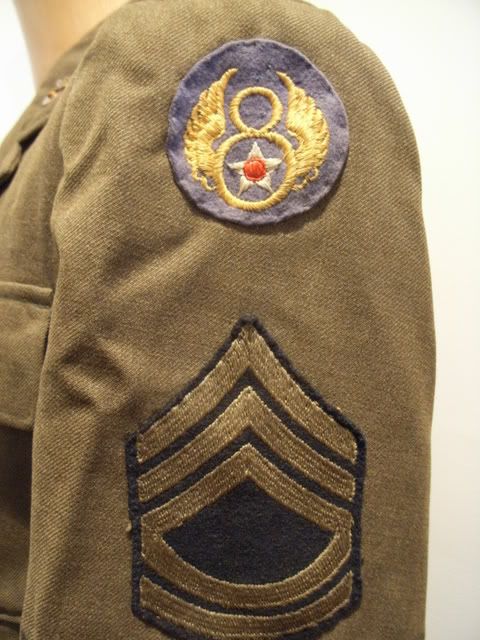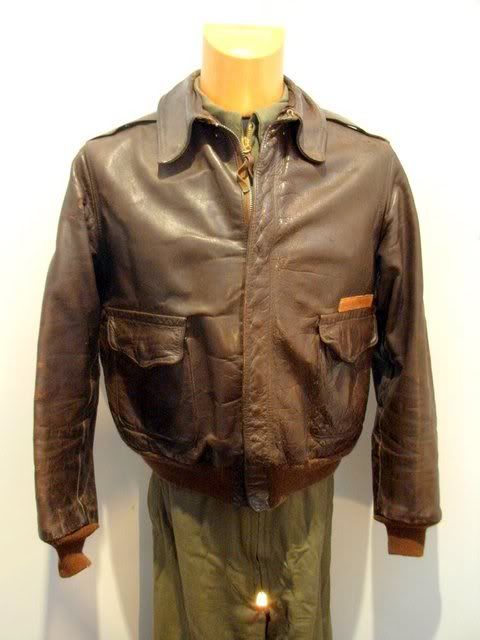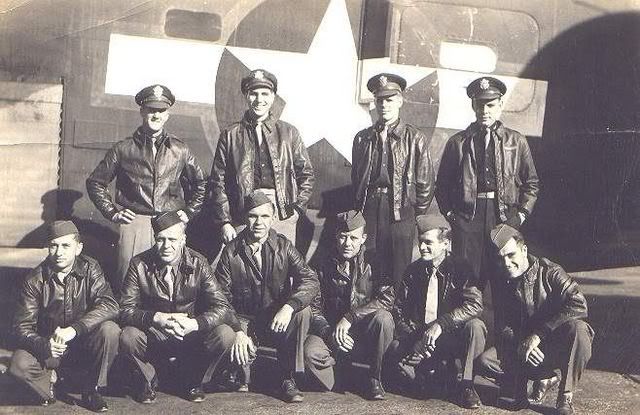-
When you click on links to various merchants on this site and make a purchase, this can result in this site earning a commission. Affiliate programs and affiliations include, but are not limited to, the eBay Partner Network.
You are using an out of date browser. It may not display this or other websites correctly.
You should upgrade or use an alternative browser.
You should upgrade or use an alternative browser.
Where can i find Informations about WWII USAAF Ribbons?
- Thread starter Lee-AVG
- Start date
Andrew
Well-Known Member
Can anyone else pls confirm that this ribbon bar is for the Distinguished Flying Cross (US)? At least that's what it appears to be to me. I found it in the pocket of this jacket which I used to own along with the owners A-2. In the research I did at the time there was no mention of a DFC. I still have the ribbon (lost it at the time I sold the jacket, but I have since found it again).
This bit of text from the website is interesting;
"The Eighth Air Force awarded 41,000 DFC's. Presumably, based on those numbers, virtually all 8AF aces received a DFC."



That's the Owner bottom left kneeling.

This bit of text from the website is interesting;
"The Eighth Air Force awarded 41,000 DFC's. Presumably, based on those numbers, virtually all 8AF aces received a DFC."



That's the Owner bottom left kneeling.

watchmanjimg
Well-Known Member
That's a DFC.
tgd31968
Member
It is a DFC.
DFC's, while not exactly handed out, were fairly widely awarded. Aces generally recieved them. It awarded for "heroism or extraordinary achievement this is clearly distintive involving operations during aerial flight that are not routine".
Quoting from A complete guide to all United States Military Medals 1939 to Present, "While the DFC was never intended to be an automatic award, the Army Air Force did use it in that capacity many times during WWII by awarding DFCs for specific numbers of sorties and flying hours in a combat theater".
Keep in mind that other than DFC in WWII the Airforce was a part of the Army, so there are few exclusivly Airforce medals until 1947.
Terry
DFC's, while not exactly handed out, were fairly widely awarded. Aces generally recieved them. It awarded for "heroism or extraordinary achievement this is clearly distintive involving operations during aerial flight that are not routine".
Quoting from A complete guide to all United States Military Medals 1939 to Present, "While the DFC was never intended to be an automatic award, the Army Air Force did use it in that capacity many times during WWII by awarding DFCs for specific numbers of sorties and flying hours in a combat theater".
Keep in mind that other than DFC in WWII the Airforce was a part of the Army, so there are few exclusivly Airforce medals until 1947.
Terry
Leadsky said:Can anyone else pls confirm that this ribbon bar is for the Distinguished Flying Cross (US)? At least that's what it appears to be to me. I found it in the pocket of this jacket which I used to own along with the owners A-2. In the research I did at the time there was no mention of a DFC. I still have the ribbon (lost it at the time I sold the jacket, but I have since found it again).
This bit of text from the website is interesting;
"The Eighth Air Force awarded 41,000 DFC's. Presumably, based on those numbers, virtually all 8AF aces received a DFC."



That's the Owner bottom left kneeling.

tgd31968
Member
Leadsky said:Thanks for the confirmation guys- I wonder what he would have done to deserve this as an Aircrew member, what's his rank- Warrant Officer/ Technical Sergeant?
According to medalsofamerica.com, that is a WWII technical Sergeant.
Warrent officers I think came along later. They look like lieutenant bars with horizontal stripes on them.
Terry
watchmanjimg
Well-Known Member
Warrant officers existed in WW2. They're a strange breed, somewhere between enlisted men and commissioned officers and generally assigned to technical positions. The AAF had a flight officer rank, which was equivalent the warrant officer (junior grade) of the era. The insignia indeed resembles a lieutenant's bar but with rounded edges and opposing blue enameled inlays.
tgd31968
Member
watchmanjimg said:Warrant officers existed in WW2. They're a strange breed, somewhere between enlisted men and commissioned officers and generally assigned to technical positions. The AAF had a flight officer rank, which was equivalent the warrant officer (junior grade) of the era. The insignia indeed resembles a lieutenant's bar but with rounded edges and opposing blue enameled inlays.
It is amazing what Wikipedia.com has in it:
Army
The Army Warrant Officer rank began with the Headquarters Clerk in 1896.[4] Although originally viewed as a civilian, Army Judge Advocate General review designated them as members of the military. Since that time, the position of WO in the Army has been refined. Today, the United States Army Warrant Officer is a technical expert, combat leader, trainer, and advisor. The purpose of the Army WO is to serve in specific positions which require greater longevity than the billet duration of commanders and other staff officers. The duration of these WO assignments result in increased technical expertise as well as the leadership and management skills that make them so effective for the Army.
Army warrant officers serve as technical and tactical experts and leaders in 45 basic WO Military Occupational Specialties.[5] They serve in 15 branches of the service,[6] spanning the Active service, the Army National Guard, and the U.S. Army Reserve. They also serve at every level, from down at the section and platoon all the way to the upper echelons of the Department of the Army. Warrant officers command the Army's vessels and most bands and aircraft. In addition, they may be found in command of various small units and detached teams.[7]
Regardless of rank, Army warrant officers are officially addressed as either Sir, Ma'am, Mr. or Ms.[8] Unofficially, the informal title of "Chief" is often used as a familiar form of address.
Air Force
The United States Air Force no longer employs warrant officers. The USAF inherited warrant officer ranks from the Army at its inception in 1947, but their place in the Air Force structure was never made clear. When Congress authorized the creation of two new senior enlisted ranks in 1958, Air Force officials privately concluded that these two new "super grades" could fill all Air Force needs then performed at the warrant officer level, although this was not publicly acknowledged until years later. The Air Force stopped appointing warrant officers in 1959,[2] the same year the first promotions were made to the new top enlisted grade, Chief Master Sergeant. Most of the existing Air Force warrant officers entered the commissioned officer ranks during the 1960s, but tiny numbers continued to exist for the next 21 years.
The last active duty Air Force warrant officer, CWO-4 James H. Long, retired in 1980 and the last Air Force Reserve warrant officer, CWO-4 Bob Barrow, retired in 1992. Upon his retirement, he was honorarily promoted to CWO-5, the only person in the Air Force ever to hold this grade.[2] Barrow passed away in April 2008.[10] Since Barrow's retirement, the Air Force warrant officer ranks, while still authorized by law, are not used.
Flight Officer
During World War II, the United States Army Air Forces (USAAF) created the rank of Flight Officer,[11] [1] equivalent in rank and in the pay grade of Warrant Officer Junior Grade (today's WO1). Some of the first men to hold this rank were Americans serving as Sergeant Pilots in the British Royal Air Force and were transferred to the USAAF after the U.S. entered the war. Most flight officers were graduates of various USAAF flight training programs, including pilot, navigator and bombardier ratings. A portion of each graduating class were commissioned as second lieutenants, while the remainder were appointed as flight officers. Once reaching operational units and after gaining flying experience, many flight officers were later offered direct commissions as lieutenants. With the end of WWII in 1945, the use of the rank of Flight Officer ceased.
Members online
Total: 103 (members: 14, guests: 89)
